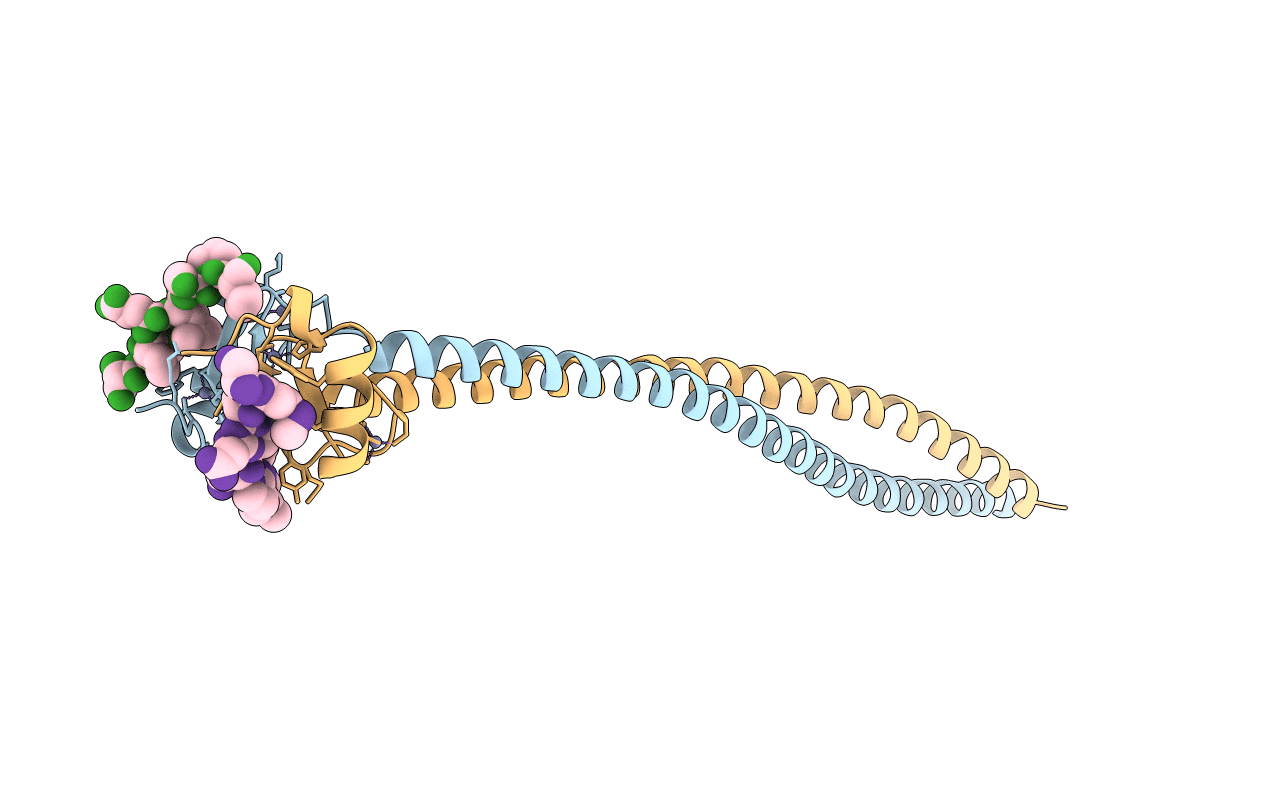
Deposition Date
2016-01-05
Release Date
2016-01-20
Last Version Date
2024-03-06
Entry Detail
PDB ID:
5HDA
Keywords:
Title:
Crystal Structure of the BS69 coiled coil-MYND domains bound to an EBNA2 PXLXP motif
Biological Source:
Source Organism:
Homo sapiens (Taxon ID: 9606)
Human herpesvirus 4 (Taxon ID: 10377)
Human herpesvirus 4 (Taxon ID: 10377)
Host Organism:
Method Details:
Experimental Method:
Resolution:
2.39 Å
R-Value Free:
0.26
R-Value Work:
0.22
R-Value Observed:
0.22
Space Group:
P 1 21 1


